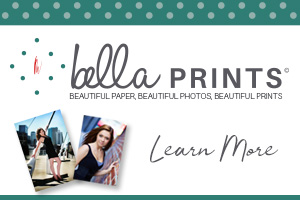Intro by Skip Cohen
With Part I, between my thoughts and Bryan’s we hopefully planted a few seeds to get you thinking about the experience you create for each client. In Part II, Bryan is taking us into the specifics to create that “Killer” experience.
It’s really a pretty simple process, but it takes a level of discipline and respect for each relationship. And, it takes time to step out from behind the camera and interact with your clients.
Think about your most favorite restaurant for example. The quality of the food is always important, but if you’re like my wife and me, it’s the dining experience too. It’s about the atmosphere, the attitude of the staff, the service – it’s a complete package
Here’s the best part, from the position of being a business owner. Happy customers tell their friends and become your ambassadors. For example, I’m a big fan of TripAdvisor.com. Five years ago I wrote my first post. What started out as the fun of doing a review of places we’d gone has evolved into 80,000 reads to date.
With every customer, you have an opportunity to do so much more than just provide beautiful prints, video or slideshows. You’ve got a chance to create a new ambassador for your business and it all comes out of making sure you focus on more than just your camera!
by Bryan Capporicci
I have found that the best way to start designing the customer experience is to work backward. Begin by defining a period of time in the future (after the customer has gone through the “customer flow”) and then work backward from there. Identify milestones (or dates) in the “flow” that will trigger different events, pieces of correspondence or customer touch points.
Each milestone or trigger point should be one of three “types” of events:
- Service – A touch point to offer good customer service with no specific call-to-action.
- Deliverable – A touch point where you deliver or give something to your client.
- Opportunity – A touch point when you are providing an opportunity (and a reason) for your client to give something to you.
Quick aside – remember I started this article talking about “customer service” and how it was only one piece of the pie? You can see now what I mean by that – customer service as it is formally referred to is really only the first item above. The other two items (deliverables and opportunities) make up the rest of the customer experience and are crucial pieces to guarantee a happy loyal client.
It’s important to note here that each “type” of event should have an equal presence in the customer experience. This means that you should be giving and servicing twice as much as you should be asking for something.
Example flow – Portrait client experience
I’ll walk through a “flow” that I might define for my photography business for my portrait clients. For each trigger (date), I’ll define what the touch point and message are, as well as its purpose and the “type” of event it is.
1 year after session
Be nostalgic, tell a relevant story about the session and say “can you believe it’s been a year since our session”.
Purpose: Stay top-of-mind
Type: Service
6 months after session
Tell them where you’ve shared their session (blog, social media, a local publication, website) – somewhere new since the last correspondence. Tell them that you only have room for a few more sessions this season and would be interested in speaking with any of their family/friends.
Purpose: Remind them of their images/session and ask for a referral.
Type: Opportunity
4 months after session
Tell them where you’ve shared their finished wall portraits (blog, social media, a local publication, website).
Purpose: Reminder of their images/session and stay-in -touch.
Type: Service
3 months after session
Follow-up to check if they’ve hung their wall portraits. If not: ask if they would like you to do so at no cost. If so: ask if they would send a quick snapshot from their phone so you can share it on social media and on your blog.
Purpose: Follow-up, an opportunity for you to add value and give great customer service.
Type: Service
2 months after session
Follow-up to be sure that all of the prints were in their package and that they were happy with everything.
Purpose: Follow-up, opportunity to give great customer service. Opportunity for them to order more and/or give feedback (positive or negative) where they otherwise may not have said anything.
Type: Service
7 weeks after session
Blog the images that they ordered and send them the link. Add them to Facebook and “tag” them.
Purpose: Engagement, a reminder of their images/session, referral opportunity on social media.
Type: Deliverable
5 weeks after session
Deliver prints and ask for a referral.
Purpose: Over-deliver on your promise/turn-around and potentially get new business.
Type: Deliverable
2 weeks after session
Share 1 or 2 images social media “as you’re working on them” from their print order.
Purpose: Reminder of their images/session, referral opportunity on social media.
Type: Deliverable
1 week after session
Ordering appointment.
Purpose: Maximize the emotional “high” from the session
Type: Opportunity/Service
2 days after session
Share 1 teaser as your “favourite” on social media. Tease that you “can’t wait” for their viewing appointment to order prints.
Purpose: Whet their appetite and remind them (and your other fans) that you are a full-service print studio.
Type: Deliverable
1 weeks prior to session
Confirm details and re-send clothing guidelines.
Purpose: Establish expertise and professionalism.
Type: Service
2 weeks prior to session
Design consultation to go over print sizes, other finished products and more details about their session.
Purpose: Establish expertise and professionalism, set expectations, get them to “think with the end in mind”.
Type: Service
Implementation
Once you’ve designed a “flow” for your customer experience for each genre of photography you offer, you must put it into a system or infrastructure that will ensure that you’ll actually follow do the “flow” each and every time and on time. There are all kinds of software and automated ways to make this happen, and being the techy that I am, I have my own automated implementation of this system and perhaps one day I can go into these details. For now, though, I want to keep things simple because I believe that if something is too complicated or overwhelming, then you won’t follow-through with it consistently. I’d like to suggest three simple ways that you can implement your designed “flow” and customer experience:
- Calendar – Manually enter the dates, events and tasks in your calendar (on your computer or in a calendar book) every time you book a new client.
- To-Do List – Use a task-management software (Apple’s “Reminder” is pretty good) and manually enter the dates, events and tasks into this software every time you book a new client.
- Workflow Chart – Use a physical or digital workflow chart (like this one from Design Aglow or this one from Photography Concentrate) and track your clients all in one place.
However you decide to implement the “flow” for your client experience, just be sure to have it implemented in a way that you will actually do the tasks each and every time, and on time. There’s no sense in going through the process of designing and really thinking about the customer experience if you aren’t going to actually follow-through on it each time.
Do you have a way to implement your “flow” that I haven’t mentioned? I’d love to hear your thoughts in the comments below – share away, maybe it’ll even spur a 2nd follow-up article on this topic!
Action items:
For each genre of photography you offer:
1) Think about your customer experience – how can you give the most to your clients?
2) Define a “flow” backward, and be sure to include twice the amount of “giving” as you do “taking” or “asking”.
3) Determine the best way for you to implement your “flow”, whether it be a calendar, to-do software or physical chart.
4) Stay on top of your client experience. Refine it often, and always measure what’s working and what’s not.
















